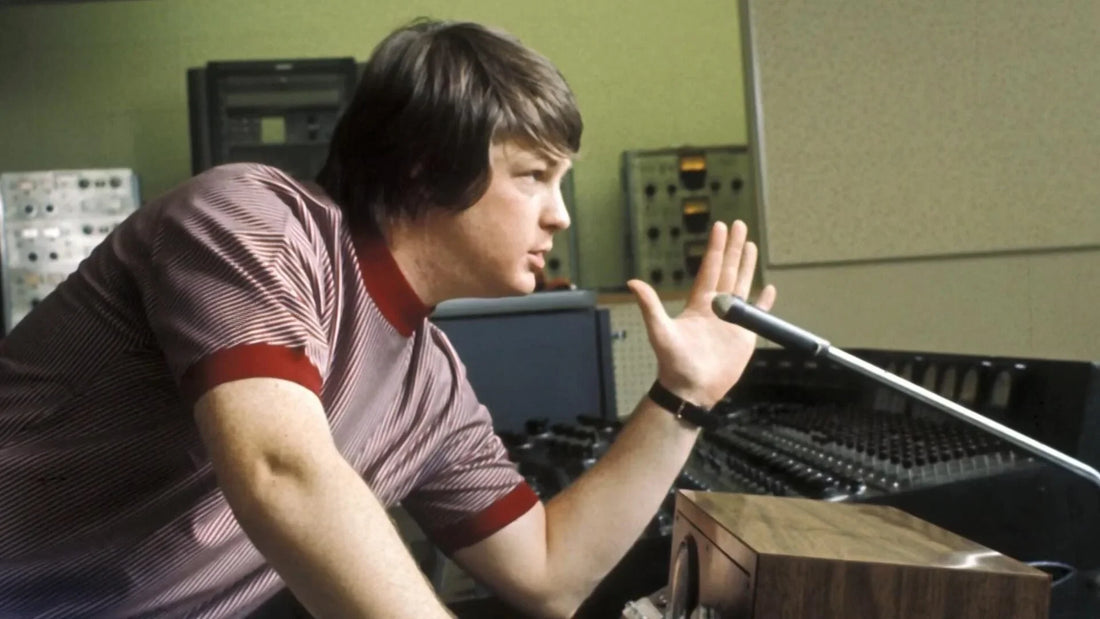
How Brian Wilson Changed Popular Music Forever
Share
Brian Wilson didn’t just write songs, he reshaped the very way music was recorded. While the band’s early hits rode the wave of surf pop, it was Wilson’s later work, particularly on the ground-breaking Pet Sounds and the legendary Smile sessions, that solidified his status as a studio visionary. His innovative recording techniques not only broke industry norms but also influenced generations of producers.
Studio as an Instrument
Before Brian Wilson, most pop records were relatively straightforward—capture a live performance and polish it. But Wilson saw the studio not just as a place to document sound, but as a compositional tool itself. He layered and edited individual tracks with painstaking precision, often constructing songs piece by piece across multiple sessions. Each element—bassline, percussion, harmonies—was treated as a building block in a sonic cathedral.
Modular Recording
Perhaps his most futuristic innovation was “modular recording,” a technique he pioneered during the Smile sessions. Instead of recording songs linearly from start to finish, Wilson would record short musical fragments—called “modules”—out of order, sometimes without a clear structure in mind. These segments were then rearranged and edited together to create complete songs. This cut-and-paste method foreshadowed how digital producers today work with loops and samples in software like Pro Tools or Ableton.
Unusual Instrumentation and Sound Design
Wilson’s arrangements were lush, often including instruments far outside the pop mainstream: bicycle bells, dog barks, Coca-Cola cans, harpsichords, theremins, and even water jugs. On Pet Sounds, he used a string section, French horn, vibraphones, and sleigh bells—not just for embellishment, but as essential elements of the composition.
At the time this kind of approach was met with much criticism. But as listeners came to realise that this orchestral approach turned simple pop songs into textured, emotionally rich soundscapes - much later in Brian's life - his genius began to be acknowledged.

The Wrecking Crew and Layered Takes
Wilson often employed The Wrecking Crew, an elite group of LA session musicians, to help realize his musical visions. He’d sometimes record dozens of takes of a single part, layering performances and subtly adjusting each one. This obsessive attention to detail gave Beach Boys recordings a warm, full, almost otherworldly quality. Tracks like “God Only Knows” and “Wouldn’t It Be Nice” are masterclasses in harmony and sonic layering.
Revolutionary Vocal Arrangements
The Beach Boys were famous for their harmonies, but under Wilson’s direction, they reached symphonic levels. He meticulously wrote and recorded vocal parts with the complexity of a classical choral arrangement, often tracking each singer separately, blending tones for maximum emotional impact. These harmonies weren’t just decorative—they were central to the songs’ gravitas.
Tape Manipulation and Effects
Wilson wasn’t afraid to experiment with tape. He used echo chambers at Capitol Studios to create rich, immersive reverb. He also employed tape splicing, speed variation, and reverse effects—techniques that prefigured psychedelia and became standard fare in later rock production.
The Legacy
Brian Wilson’s recording innovations weren’t just technical marvels—they were in service of deeper emotional expression. Pet Sounds in particular showed that pop music could be as artistically ambitious as classical or jazz. Moreover, whilst Brian was innovative and experimental, often what he produced wasn't particularly complicated. Music was deeper than that which had come before, not wider. What he influenced most of all was the journey, not the destination.
In Wilson’s own words:
"I just tried to make sounds that made me feel something—and if it gave me chills, I hoped it would give other people chills too."
That ethos, more than any specific technique, is what makes Brian Wilson’s work truly revolutionary.
